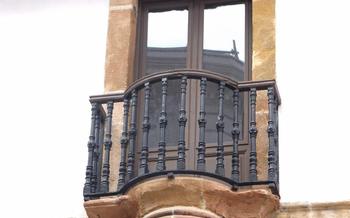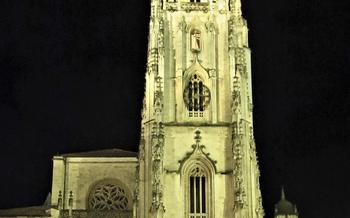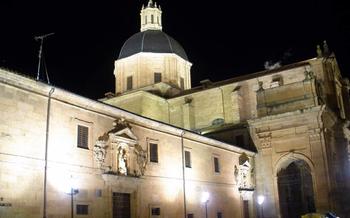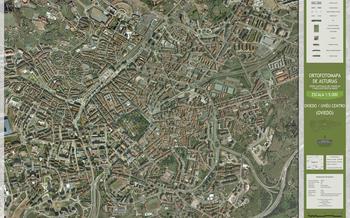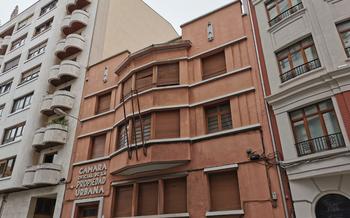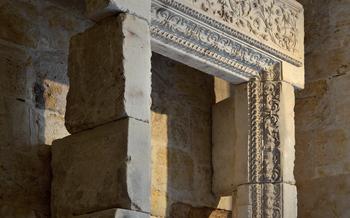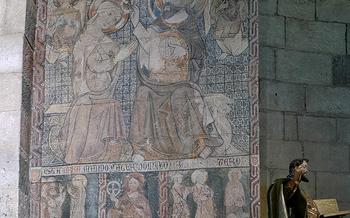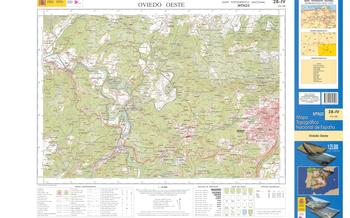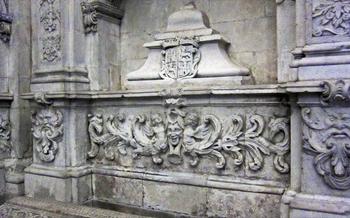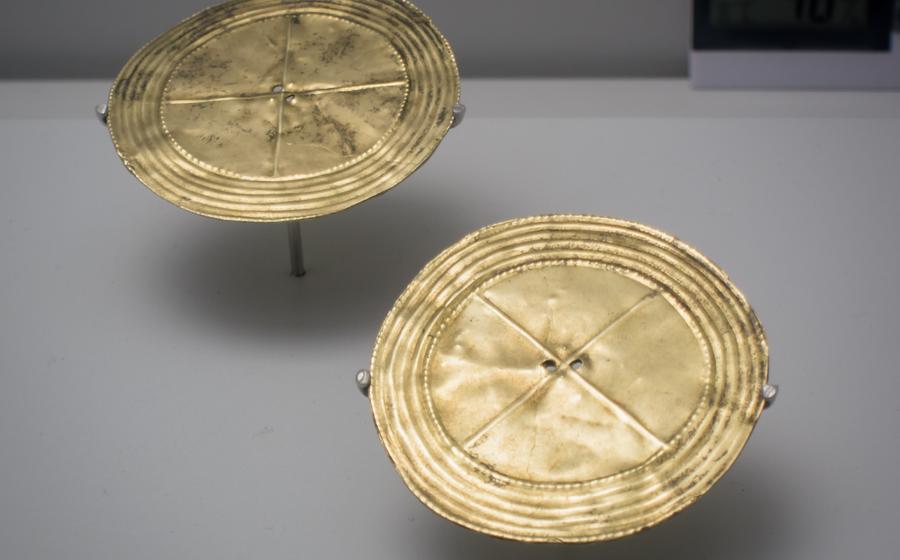
Museo Arqueológico de Asturias
- Unveiling the Past: The Museum's History
- A Masterpiece of Architecture: The Museum Building
- Prehistoric Wonders: A Glimpse into Early Asturias
- Roman Legacies: Asturias Under Imperial Rule
- Medieval Masterpieces: A Tapestry of Faith and Art
- Renaissance Splendor: A New Era of Artistic Expression
- Ethnographic Treasures: Preserving Asturian Traditions
- Interactive Experiences: Engaging with the Past
- Research and Conservation: Behind the Scenes
- Museum Shop: A Treasure Trove of Souvenirs
- Insider Tip: Unveiling Hidden Gems
Unveiling the Past: The Museum's History
The Museo Arqueológico de Asturias, established in 1844, holds a rich historical legacy. Its origins can be traced to the establishment of the Real Gabinete de Historia Natural, a cabinet of curiosities housing an assortment of natural and archaeological specimens. Over the years, the collection grew through donations from local collectors and archaeological excavations, leading to the creation of a dedicated archaeological museum in 187
The museum's first home was the Real Instituto de Jovellanos, a former military barracks, where it remained until 194As the collection expanded, the need for a larger and more suitable space became evident. In 1946, the museum found its permanent home in the former Convent of San Vicente, a splendid example of neoclassical architecture.
The museum's collaboration with institutions such as the University of Oviedo and the Spanish National Research Council (CSIC) has been instrumental in promoting archaeological research and disseminating knowledge about Asturian history and culture. In recent years, the museum has also developed educational programs and outreach initiatives to engage the community and foster a sense of cultural heritage appreciation.
A Masterpiece of Architecture: The Museum Building
The Museo Arqueológico de Asturias is not only a treasure trove of history and culture but also a masterpiece of architecture. The museum's neoclassical facade, designed by renowned architect Manuel Reguera, captivates visitors with its elegant symmetry and understated grandeur. The central courtyard, with its lush greenery and graceful arches, creates a serene and inviting space. Sculptural ornaments depicting scenes from Asturian history and mythology adorn the building's exterior, adding a touch of artistic charm. The museum's seamless integration with the surrounding city landscape exemplifies Oviedo's harmonious blend of historical and modern architecture.
Prehistoric Wonders: A Glimpse into Early Asturias
Journey through the mists Asturias. Discover an array of stone tools and weapons, meticulously crafted by our ancestors, offering a glimpse into their daily struggles and triumphs. Admire the intricate cave paintings and engravings, revealing their unique artistic expression and connection to the natural world. Encounter ritual objects and explore the significance of megalithic sites, shedding light on the spiritual beliefs and practices of these early inhabitants. Delve into the secrets of La Cueva de El Sidrón, a treasure trove of archaeological discoveries that has revolutionized our understanding of human evolution in the region.
Roman Legacies: Asturias Under Imperial Rule
Asturias, like much of the Iberian Peninsula, fell under the sway of the mighty Roman Empire. During this period of Roman rule, Asturias underwent significant transformations, leaving behind a rich legacy of archaeological treasures that are now proudly displayed in the Museo Arqueológico de Asturias. Explore the fascinating remains of Roman settlements, where the grid-like layout of streets, public baths, and theaters reveal the organizational prowess of the Roman city planners. Admire the intricate mosaics and sculptures that adorned Roman villas, depicting scenes from mythology and daily life. Study the inscriptions and coins, which provide glimpses into the lives and economy of the Romanized Asturians. Through these artifacts, the museum narrates the story of Asturias' integration into the vast Roman Empire, showcasing the profound impact of Roman culture and civilization on the region.
Medieval Masterpieces: A Tapestry of Faith and Art
The Museo Arqueológico de Asturias houses a remarkable collection of medieval artifacts that transport visitors back to a time of fervent faith and artistic excellence. Among the highlights are exquisite religious sculptures and paintings, intricate architectural elements from churches and monasteries, and illuminated manuscripts that showcase the skill and devotion of medieval Asturian artisans.
One of the most captivating exhibits is the collection of Romanesque sculptures. These finely carved stone figures, dating from the 11th to the 13th centuries, depict biblical scenes and saints with a remarkable level of detail and expressiveness. Visitors can admire the serene beauty of the Virgin Mary, the imposing presence of Christ, and the intricate narratives of saints' lives, all rendered in stone with a mastery that is both awe-inspiring and deeply moving.
The museum also boasts a collection of architectural elements from medieval churches and monasteries. These fragments, which include capitals, columns, and friezes, provide a glimpse into the grandeur and artistry of Asturian Romanesque architecture. Visitors can marvel at the intricate carvings that adorn these architectural elements, depicting everything from fantastical creatures to scenes from the Bible.
Finally, the museum's collection of illuminated manuscripts is a testament to the skill and devotion of medieval scribes and illuminators. These beautifully crafted books, often used for religious purposes, feature intricate calligraphy, vibrant colors, and elaborate illustrations. Visitors can admire the painstaking attention to detail and the artistic flair that went into the creation of these manuscripts, which are true masterpieces of medieval art.
Renaissance Splendor: A New Era of Artistic Expression
The Renaissance, a period of cultural rebirth that swept across Europe, left an indelible mark on Asturias and its artistic heritage. The Museo Arqueológico de Asturias proudly showcases a collection of paintings, sculptures, and decorative arts from this vibrant era. Visitors can admire exquisite works from the 16th and 17th centuries, reflecting the influence of the Spanish Golden Age.
Among the highlights of the Renaissance collection is a series of paintings by El Greco, one of Spain's most renowned artists. His works, characterized by their elongated figures and vibrant colors, offer a glimpse into the religious and mythological themes that dominated the period. Other notable artists represented in the museum include Juan de Flandes, Pedro Berruguete, and Luis de Morales, each contributing to the rich tapestry of Renaissance art in Asturias.
In addition to paintings, the museum displays a variety of sculptures, furniture, and decorative objects from the Renaissance period. These pieces demonstrate the exquisite craftsmanship and attention to detail that were hallmarks of the era. Visitors can marvel at intricately carved wooden furniture, ornate metalwork, and delicate ceramics, all of which reflect the opulence and sophistication of Renaissance society.
The Renaissance collection at the Museo Arqueológico de Asturias provides a fascinating glimpse into a period of artistic and cultural transformation. Through these remarkable works of art, visitors can experience the splendor of the Spanish Golden Age and gain a deeper understanding of its lasting impact on the region.
Ethnographic Treasures: Preserving Asturian Traditions
Delving into the ethnographic collection of the Museo Arqueológico de Asturias is like embarking on a journey through time, exploring the rich tapestry of Asturian traditions and customs. Traditional costumes, meticulously crafted with intricate embroidery and vibrant colors, tell stories of a bygone era when every village had its unique attire. Rural tools and utensils, once indispensable in the daily lives of Asturians, showcase the ingenuity and resourcefulness of a people deeply connected to the land. Crafts and domestic objects, ranging from pottery and textiles to furniture and musical instruments, offer a glimpse into the region's diverse cultural heritage.
The Museo Arqueológico de Asturias plays a crucial role in preserving and showcasing these ethnographic treasures, ensuring that future generations can appreciate and understand the traditions that have shaped Asturian identity. Through its extensive collection, the museum highlights the importance of cultural heritage as a vital part of a community's collective memory and identity.
Interactive Experiences: Engaging with the Past
The Museo Arqueológico de Asturias goes beyond the traditional museum experience by offering a range of interactive exhibits and educational programs designed to engage visitors of all ages. Multimedia presentations bring the past to life, allowing visitors to explore virtual reconstructions of archaeological sites and artifacts. Hands-on activities for children encourage exploration and discovery, while guided tours and workshops provide in-depth insights into the museum's collections. The museum also collaborates with local schools to offer educational programs that connect students with their Asturian heritage. These initiatives not only enhance the visitor experience but also foster a greater appreciation for the region's rich history and culture.
Research and Conservation: Behind the Scenes
Beyond its captivating exhibitions, the Museo Arqueológico de Asturias plays a crucial role in preserving and expanding our understanding of Asturian heritage. The museum houses a dedicated research department that conducts archaeological excavations, analyzes artifacts, and contributes to the ongoing study of the region's past. Researchers collaborate with universities, research centers, and other institutions to further their investigations and share their findings with the academic community.
The museum also undertakes conservation and restoration initiatives to ensure that its collection remains in pristine condition for future generations. Conservators employ specialized techniques to repair, clean, and stabilize artifacts, ensuring their preservation and longevity. Through these efforts, the Museo Arqueológico de Asturias serves as a guardian of Asturian heritage, safeguarding its cultural treasures for the benefit of researchers, visitors, and future generations.
Museum Shop: A Treasure Trove of Souvenirs
As you depart from the fascinating journey through Asturian history, don't miss the opportunity to visit the museum shop, a treasure trove of souvenirs and keepsakes. Discover a diverse selection of books and publications delving into the region's rich history and archaeology, providing an enduring connection to the stories you've encountered.
Surrounded by exquisite reproductions of artifacts and jewelry, you'll find the perfect memento to commemorate your visit. Take home a piece of Asturian craftsmanship with locally made souvenirs and handmade treasures, each infused with the region's unique charm.
The museum shop is not just a retail space; it's a cultural hub where you can extend your exploration of Asturias. Whether you seek to deepen your knowledge or share the wonders of the region with loved ones, the museum shop offers a tangible piece of Asturias to carry with you long after your visit.
Insider Tip: Unveiling Hidden Gems
To fully immerse yourself in the museum's charm, venture beyond the main galleries and discover its hidden gems. Ascend to the rooftop terrace for breathtaking panoramic views of Oviedo's historic center, a feast for the eyes. Seek out the secluded courtyards and gardens, where you can find respite from the hustle and bustle of the city and soak in the tranquility of these hidden oases. Enhance your visit by booking a guided tour in Spanish or English, where knowledgeable guides will unveil the museum's secrets and provide insights into its collection. Take advantage of the discounts offered to students and seniors, making the museum accessible to visitors of all ages.

